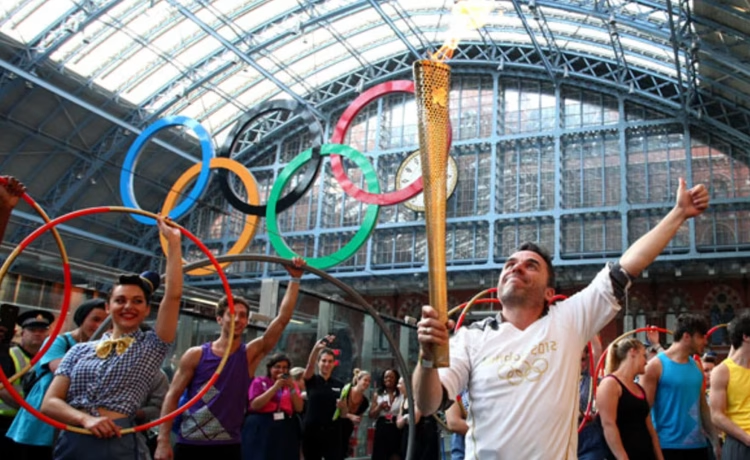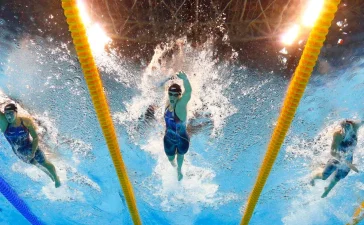In a fast-paced and often stressful world, sport and recreation stand out as vital components of a balanced, fulfilling life. Beyond competition and entertainment, they represent health, social connection, and personal growth. Whether it’s playing a local soccer match, hiking in nature, or joining a fitness class, recreational activities bring people together, strengthen communities, and improve mental and physical well-being.
In recent years, the importance of sport and recreation has gained new recognition — not only for physical fitness but also for their role in mental health, social cohesion, and even economic development. As technology continues to shape our lifestyles, the challenge lies in keeping sport and recreation accessible, inclusive, and engaging for all.
1. The Physical and Mental Health Benefits of Sport
One of the most obvious advantages of sport and recreation is their contribution to physical health. Regular activity strengthens the heart, builds muscle, enhances flexibility, and reduces the risk of chronic diseases such as diabetes, hypertension, and obesity.
According to the World Health Organization (WHO), adults should engage in at least 150 minutes of moderate physical activity per week. Sports provide a fun and structured way to meet this recommendation while also improving endurance, coordination, and balance.
However, the benefits go far beyond the physical. Sport is a powerful tool for mental health. Engaging in regular activity releases endorphins — the body’s natural mood enhancers — which help reduce stress, anxiety, and depression. Studies show that people who participate in team sports or outdoor activities experience higher levels of happiness and life satisfaction.
For many, sport serves as a healthy outlet for emotions, a way to unwind after work, or a means of reconnecting with one’s inner drive.
2. Building Community Through Shared Activity
Sports and recreation bring people together across boundaries of age, culture, and background. From local sports leagues to community recreation centers, these activities foster inclusion, teamwork, and a sense of belonging.
At the grassroots level, local clubs and community programs provide opportunities for people to connect, collaborate, and support one another. These shared experiences strengthen social ties and create spaces where diversity thrives.
For example, neighborhood soccer tournaments or recreational marathons often draw participants from all walks of life, uniting them under a common goal of fun and fair play. In this sense, sport becomes a universal language — one that transcends differences and builds bridges between individuals and communities.
Even global sporting events like the Olympics or the FIFA World Cup remind us of the power of sport to inspire unity and celebrate human achievement.

3. Recreation as a Path to Work-Life Balance
In an era dominated by screens and constant digital connection, recreational activities offer a crucial escape. They allow people to disconnect from technology, breathe fresh air, and focus on the present moment.
Work-related stress and burnout are increasingly common problems. Recreation — whether it’s yoga, swimming, cycling, or hiking — provides a healthy counterbalance. These activities help individuals recharge, boost creativity, and improve focus.
Many companies are now recognizing the importance of recreational opportunities for their employees. Corporate wellness programs often include gym memberships, team-building sports, or mindfulness retreats. By encouraging recreation, organizations not only enhance productivity but also foster a healthier, happier workforce.
In this way, recreation serves not as a luxury, but as a necessity for sustainable living in modern society.
4. The Economic and Social Impact of Sports
Sports and recreation are not only essential for individual well-being — they also have a significant economic and social impact.
The global sports industry is worth over $600 billion, encompassing everything from equipment manufacturing and facility management to tourism and broadcasting. Local economies benefit from sports events that draw crowds, create jobs, and stimulate spending on hotels, restaurants, and transportation.
Recreational tourism — such as skiing, surfing, or hiking trips — also generates income while promoting environmental awareness. Many rural and coastal communities rely on recreational tourism as a key source of revenue.
Moreover, investments in sports infrastructure, such as community centers and public parks, have long-term social benefits. They encourage active lifestyles, reduce healthcare costs, and help prevent youth crime by providing positive outlets for energy and creativity.
5. Inclusivity and Accessibility in Modern Sports
As sport and recreation evolve, inclusivity has become a major focus. Access to sports facilities and opportunities should not depend on age, gender, income, or physical ability.
Today, adaptive sports programs are helping people with disabilities participate fully in physical activities. Wheelchair basketball, adaptive skiing, and para-swimming are just a few examples of how innovation is breaking down barriers and fostering equality.
Similarly, efforts to close the gender gap in sports have gained momentum. Campaigns promoting women’s sports and equitable funding are encouraging more female athletes to pursue competitive and recreational opportunities.
Recreational spaces are also becoming more inclusive, with cities investing in accessible playgrounds, safe walking trails, and free fitness programs. This commitment ensures that everyone — regardless of background or ability — can enjoy the benefits of an active lifestyle.
6. Technology’s Role in Shaping Recreation
Technology has changed how people engage in sport and recreation — for better and for worse.
On the positive side, digital fitness tools and apps have made it easier to track progress, set goals, and stay motivated. Virtual coaching, online workout programs, and wearable devices such as smartwatches allow individuals to personalize their fitness routines.
E-sports, once dismissed as mere gaming, have evolved into a billion-dollar industry and a recognized form of recreation and competition. They provide opportunities for people who may not participate in traditional physical sports to engage in teamwork, strategy, and skill-building.
However, technology also brings challenges. The rise of sedentary lifestyles and screen addiction has led to declining physical activity levels in many societies. Striking the right balance — using technology to enhance rather than replace real-world activity — is essential for promoting holistic well-being.
7. The Role of Sport in Youth Development
For young people, sports are more than just play — they are a foundation for lifelong values. Participation in sports teaches discipline, teamwork, perseverance, and leadership. It helps youth learn to handle both victory and defeat with grace.
Schools that prioritize physical education and extracurricular sports see improvements in students’ focus, attendance, and self-esteem. Moreover, team sports encourage social skills and empathy, preparing children to thrive in collaborative environments.
Youth recreation programs also help reduce risky behaviors by offering constructive outlets for energy and curiosity. Whether it’s a neighborhood basketball game or a school swimming program, the lessons learned on the field often extend far beyond it.
8. Environmental Responsibility in Recreation
As outdoor recreation grows, so does the need for environmental awareness. Hiking, camping, and water sports connect people to nature — but they also require responsible behavior to protect ecosystems.
Organizations are increasingly promoting sustainable recreation, encouraging participants to minimize waste, respect wildlife, and maintain trails. Businesses that operate in outdoor recreation are adopting eco-friendly practices, such as using recyclable materials and supporting conservation initiatives.
Reconnecting people with nature through recreation fosters environmental stewardship — a critical value in addressing climate challenges and preserving natural resources for future generations.
9. The Future of Sport and Recreation
The future of sport and recreation lies in innovation, inclusivity, and sustainability. As the world becomes more urbanized, cities must prioritize accessible green spaces, public gyms, and community programs. Digital technologies will continue to enhance engagement, but real-world interaction will remain at the heart of recreation’s value.
We can expect hybrid experiences — combining virtual training with real-world performance — and the continued growth of wellness tourism, which integrates travel, fitness, and relaxation.
At the same time, mental health awareness will drive more people toward recreational activities as a means of achieving emotional balance. Governments, schools, and businesses will play vital roles in promoting participation and ensuring equal access for all.

Conclusion
Sport and recreation are much more than leisure activities — they are essential pillars of a healthy, connected, and vibrant society. They build bodies, strengthen minds, unite communities, and inspire purpose. In every culture and generation, the simple act of movement — whether through sport, play, or exploration — reminds us of what it means to be alive.
As we look ahead, fostering a world that values active living, inclusivity, and sustainability will ensure that sport and recreation continue to shape better lives, one game, one hike, and one shared experience at a time.





